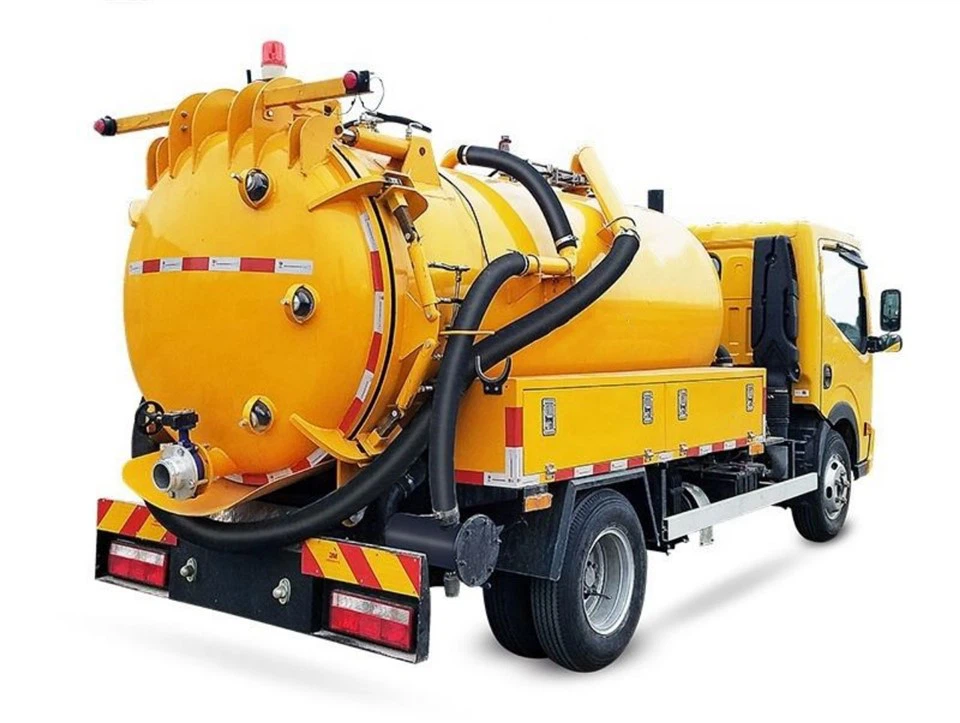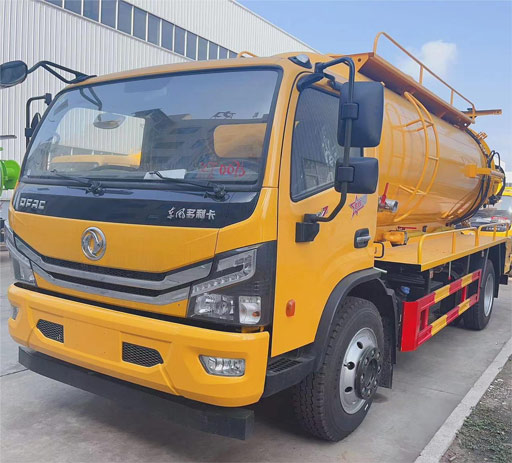Everything You Need to Know About Grapple Trucks

Introduction

Grapple trucks are specialized vehicles that play a crucial role in various industrial and municipal applications. From tree removal services to waste management, the versatility and efficiency of grapple trucks make them indispensable for handling heavy and cumbersome materials. In this comprehensive article, we will dive deep into what grapple trucks are, how they work, their applications, and the various types available in the market. Whether you’re a business owner looking to invest in a grapple truck or simply curious about these fascinating machines, this guide will provide you with all the information you need.
What Are Grapple Trucks?
A grapple truck is a type of vehicle that is equipped with a mechanical arm, known as a grapple, which is used for lifting and moving heavy materials. The grapple is typically affixed to the vehicle’s rear and can pick up a variety of items, such as debris, logs, scrap metal, and even large containers. These trucks are often built on a heavy-duty chassis to support the weight and stress that comes with these operations.
Components of a Grapple Truck
Understanding the key components of a grapple truck can help you appreciate its functionality:
- Chassis: The base of the truck designed for heavy lifting.
- Grapple Arm: The hydraulic arm that does the lifting and moving.
- Grapple Claw: The gripping mechanism at the end of the arm.
- Hydraulic System: Powers the grapple and other functionalities.
- Dump Bed: Often used to unload the materials picked up by the grapple.
How Do Grapple Trucks Work?
The operation of grapple trucks relies heavily on hydraulic systems, which allow for smooth and powerful movements. Here is a step-by-step process of how they work:
1. Preparing the Load
The operator identifies the material or debris to be lifted. The grapple arm is positioned above the item.
2. Engaging the Grapple
The operator activates the hydraulic system, which allows the grapple to open and grasp the material securely.
3. Lifting the Load
Once the grapple has a secure hold, the operator lifts the arm, raising the load off the ground.
4. Moving the Load
The operator then moves the truck to the desired unloading area, using precise movements to navigate around obstacles.
5. Unloading the Material
The grapple opens to release the material into the designated area, whether it’s a landfill, recycling center, or another location.
Applications of Grapple Trucks
Grapple trucks have a wide range of applications across various industries:
1. Tree Removal and Forestry
In the landscape and forestry industries, grapple trucks are invaluable for removing fallen trees, branches, and timber. The grapple can quickly pick up large logs, making the cleanup process efficient.
2. Construction and Demolition
During construction or demolition projects, grapple trucks are used to clear debris, scrap metal, and other materials from job sites, ensuring that work can continue smoothly.
3. Waste Management
Cities and municipalities utilize grapple trucks for waste collection and management. They can lift large bins or bulk waste items with ease.
4. Recycling Operations
Grapple trucks are also crucial in recycling operations, where they handle scrap metal, plastics, and other recyclable materials.
5. Emergency Services
After natural disasters, grapple trucks can be deployed for quick debris removal, making recovery efforts more effective.
Types of Grapple Trucks
There are several types of grapple trucks suited for different applications and environments:
1. Standard Grapple Trucks
These trucks have a standard-sized grapple and are used for general-purpose applications.
2. Extended Reach Grapple Trucks
These are designed with longer arms, allowing them to reach higher or further distances, making them suitable for tall tree removal.
3. Articulated Grapple Trucks
Articulated grapple trucks offer enhanced maneuverability due to their ability to bend at the chassis, making them ideal for tight spaces.
4. Heavy-Duty Grapple Trucks
These trucks are built for heavy lifting and are used in construction and demolition scenarios.
Choosing the Right Grapple Truck
When considering the purchase of a grapple truck, there are several factors to keep in mind:
1. Purpose
Identify what you’ll primarily be using the truck for—tree removal, debris cleanup, or waste management—as this will influence the type you need.
2. Weight Capacity
Understand the weight limits of the truck to ensure it can handle the loads you plan to lift.
3. Reach and Maneuverability
Consider the environment in which you plan to operate. Extended or articulated grapples may be necessary for difficult terrains or tight spaces.
4. Budget
Grapple trucks can vary widely in price. Set a budget that considers both initial costs and maintenance over time.
5. Brand and Model
Research reputable brands and models known for reliability and performance.
Maintenance Tips for Grapple Trucks
Proper maintenance is key to maximizing the efficiency and lifespan of grapple trucks:
1. Regular Inspections
Conduct inspections regularly to check for wear and tear and address potential issues early.
2. Hydraulic System Maintenance
Ensure the hydraulic system is regularly serviced, including checking for leaks and keeping fluid levels topped off.
3. Lubrication
Lubricate moving parts regularly to minimize friction and prevent wear.
4. Cleanliness
Keep the truck clean and free of debris to prevent damage and maintain functionality.
5. Timing Belts and Chains
Check timing belts and chains as per the manufacturer’s guidelines, replacing them when necessary.
Cost of Grapple Trucks
The cost of grapple trucks can vary based on several factors:
1. New vs. Used
New grapple trucks typically range from $100,000 to $300,000, while used models can be significantly cheaper depending on their condition.
2. Size and Capacity
Larger and more powerful grapple trucks usually come at a higher price point due to their operational capabilities.

3. Custom Features
Additional features, such as enhanced grapple designs or advanced hydraulic systems, will also affect the cost.
FAQ About Grapple Trucks
1. What is the average lifespan of a grapple truck?

A well-maintained grapple truck can last anywhere from 10 to 15 years, depending on usage and care.
2. Can grapple trucks be used in winter conditions?
Yes, grapple trucks are often equipped to handle winter conditions, but operators should exercise caution on icy surfaces.
3. Are grapple trucks difficult to operate?
While they require training, many operators find grapple trucks straightforward to use with proper instruction.
4. How much weight can a grapple truck lift?
The lifting capacity varies by model but typically ranges from 10,000 to 30,000 pounds.
5. What maintenance is required for a grapple truck?
Regular inspections, lubrication, and hydraulic system checks are essential for keeping a grapple truck in good working condition.
6. Can I rent a grapple truck instead of buying one?
Yes, many companies offer rental options for grapple trucks, making it easier to manage temporary projects without a large investment.
